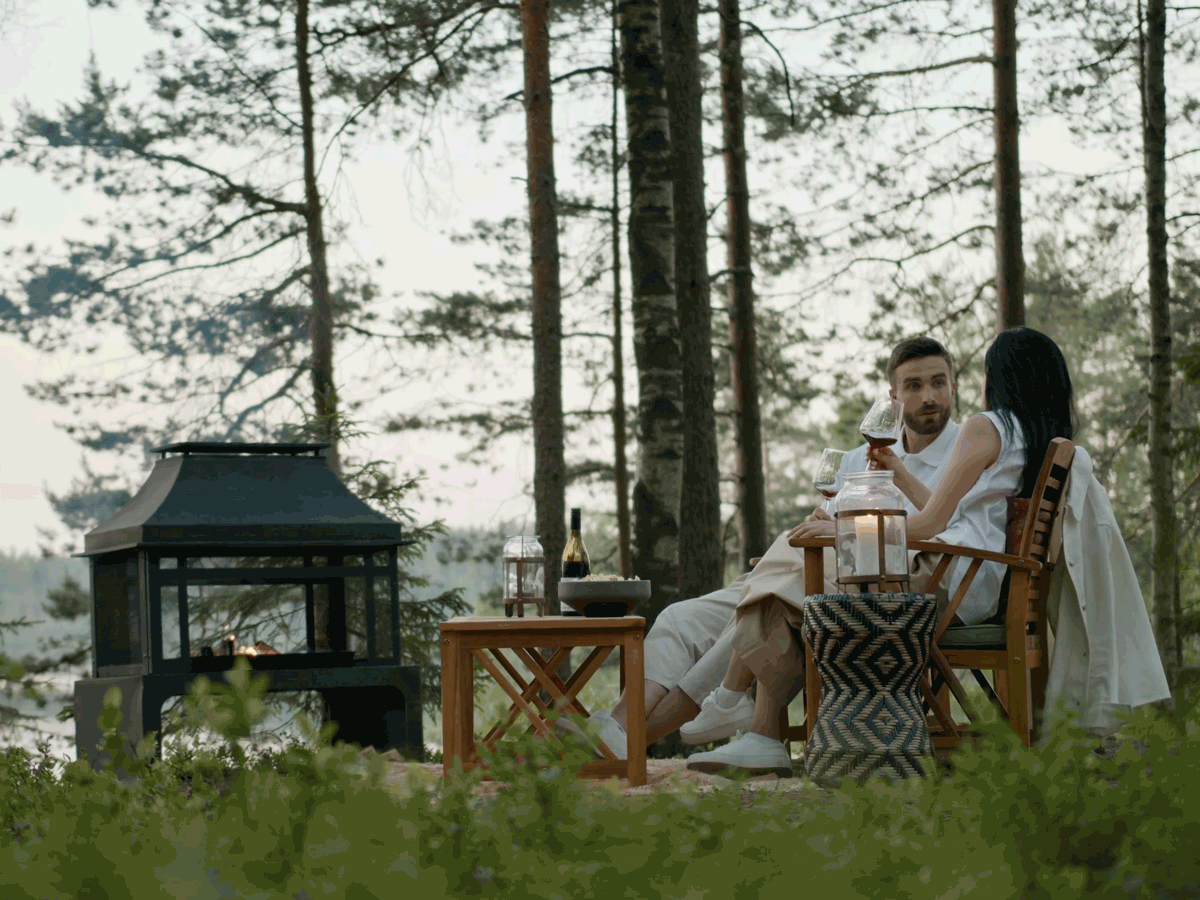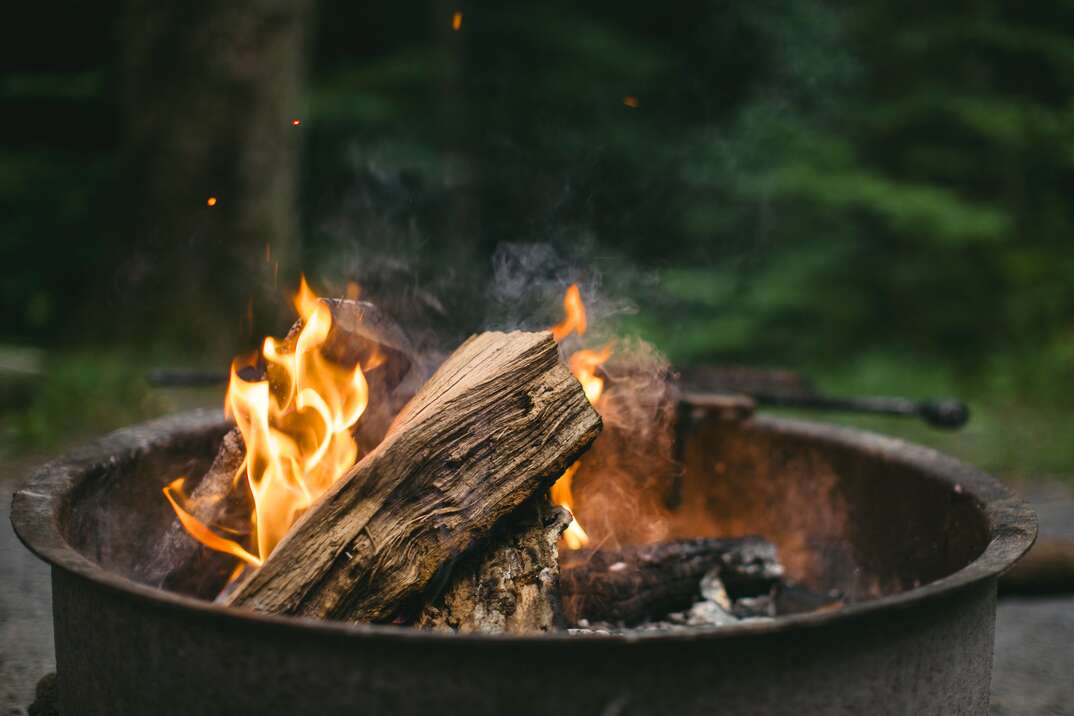Hot Tips! 5 Backyard Fire Safety Suggestions

Gathering around a crackling fire pit in your backyard is a great way to unwind with family or friends. You can break out the marshmallows and make some s’mores, or just take the opportunity to warm yourself next to the glow. But you should know that fire — as beautiful as it can be — is a serious hazard.
This May Also Interest You: How to Build a Fire Pit
Fire anywhere is a safety risk, so outdoor fire pit safety is just as important as indoor fireplace safety. Keep these tips in mind the next time you light a backyard fire.
Can You Have a Fire Pit in Your Backyard?
In most areas, it's legal to have a fire pit in your backyard, but some counties or cities prohibit people from having them. Based on local weather conditions, there may be temporary bans on backyard fires.
Many local governments that allow fire pits set regulations on how and where you can use them. Fires typically have to be contained in an approved receptacle. Local regulations might limit the size of your fire pit and where it's located as well. Check with your local fire department or city office to learn about the local regulations.
How Far Away Should a Fire Pit Be From the House?
Whether you have a permanent or portable fire pit, placement is one of the most important fire pit safety issues. If you build a fire pit in your backyard, location is especially important because you can't move it once it's installed. This Old House says fire pits should be a minimum of 10 feet from your home and other structures or flammable objects, such as tree branches. Placing it 20 to 25 feet away from any structures is even better.
Consider the area around the fire pit as well. You need enough space for seating and a walkway around the fire pit. Watch for overhead hazards when choosing the placement, such as low-hanging branches, overhead lines, deck roofs and other overhangs.
What Should I Put Under My Fire Pit?
Portable fire pits can be placed anywhere, but the material underneath is a safety consideration. If you put it on your wood deck, it can leave scorch marks on the wood, or an ember could catch the deck on fire. Be similarly cautious with grass; a flying ember could light your lawn on fire.
Putting fire-resistant material under your fire pit makes it easier to use it safely. Bricks or concrete pavers are suitable options that can stand up to the heat. Extend the brick or patio area several feet away from the fire pit to catch stray embers.
More Related Articles:
- Wood-Burning Stove and Fireplace Safety
- Add Some Pizzazz to Your Outdoor Space? How to Build a Brick Pizza Oven
- Homeowners, Don’t Get Burned July 4th: What You Need to Know About Fireworks and Home Insurance
- How Much Does It Cost to Install a Patio?
- How to Build a Patio: 9 Steps to Backyard Paradise
 -------------------------------------------
-------------------------------------------
Fire Pit Safety Tips
It's important to use your fire pit safely. Here are five tips to ensure you can enjoy your fire without other hazards:
Check the Conditions
Even if you've created a safe fire pit area, not all conditions work for having a bonfire. Avoid overly windy days. Dry conditions can also increase the chance of a fire if an ember flies out of the fire pit. Watch for burn bans in your area, and skip using the fire pit during those times. Using a patio heater when conditions aren't ideal for a bonfire can give you warmth without the risk.
Start the Fire Safely
Dry, seasoned wood is ideal for a backyard fire pit or bonfire. Cedar, pine and other softwoods often create more sparks and smoke than harder woods. Choose pieces of wood that fit completely inside the fire pit.
Never use gasoline, lighter fluid or other flammable fluids to start your fire pit. Don't add those liquids to make the flames higher or restart a fire that goes out. Huge flames or even an explosion can cause serious injury to you and anyone near the fire pit.
Use wood shavings, cardboard, fire starters or similar materials to start your fire safely. Add twigs and small branches to get the fire going. Then, add your larger pieces of wood to fuel the fire. If your fire pit includes a cover or screen, put it in place once you start the fire to prevent embers from flying out of the pit.
Prepare to Put Out a Fire
Always be prepared in case something goes wrong and the fire spreads outside the fire pit. Having your garden hose ready to go and within reach of the fire is an easy solution. You can also have a fire extinguisher handy whenever you use your fire pit. Other options include a large bucket of water, a shovel to toss dirt on the fire or a fire blanket.
Stay Back
Keeping at least 3 feet distance between yourself and the fire reduces the risk of personal injury. Watch children and pets especially closely since they might run close to the fire pit without realizing the danger. Avoid messing around near the fire or becoming overly intoxicated, as this increases the chances of getting too close or falling into the fire.
Extinguish the Fire Completely
When the last s'mores are gone and everyone's ready to call it a night, make sure the fire is completely extinguished before going inside. Even small flames or glowing embers can turn into a large fire if left unattended. Douse the fire pit with water from your garden hose using a wide spray until no glowing embers remain. Ensure all sides of the wood are extinguished completely. Stir it around to make sure all embers are extinguished. You can also spray the outside of the fire pit to help cool it.


